There are many different types of screws out there, and it can be hard to decide which type to use for your project. Countersunk wood screws have a lot of advantages over other types of screws, which is why they are so popular.
Countersinking wood screws help to hide the screws; it makes the screw hard to turn, and the screw does not protrude, and it avoids cracking the wood. When you countersink your wood screws, the project will look nicer, prevent wood gouging, and it helps position the wood.

In this blog post, I will discuss the 10 main advantages of using countersunk wood screws.
What is Countersinking Wood Screws?
Countersinking wood screws is the process of drilling a hole slightly larger than the diameter of the screw. This will allow the screw to sit flush with the surface of the wood or below it.
There are two main types of countersunk screws, one has a conical point, and the other has a flat head. The conical point is used when you need the screw to sit below the surface of the wood, and the flat head is used when you want the screw to be flush with the surface of the wood.
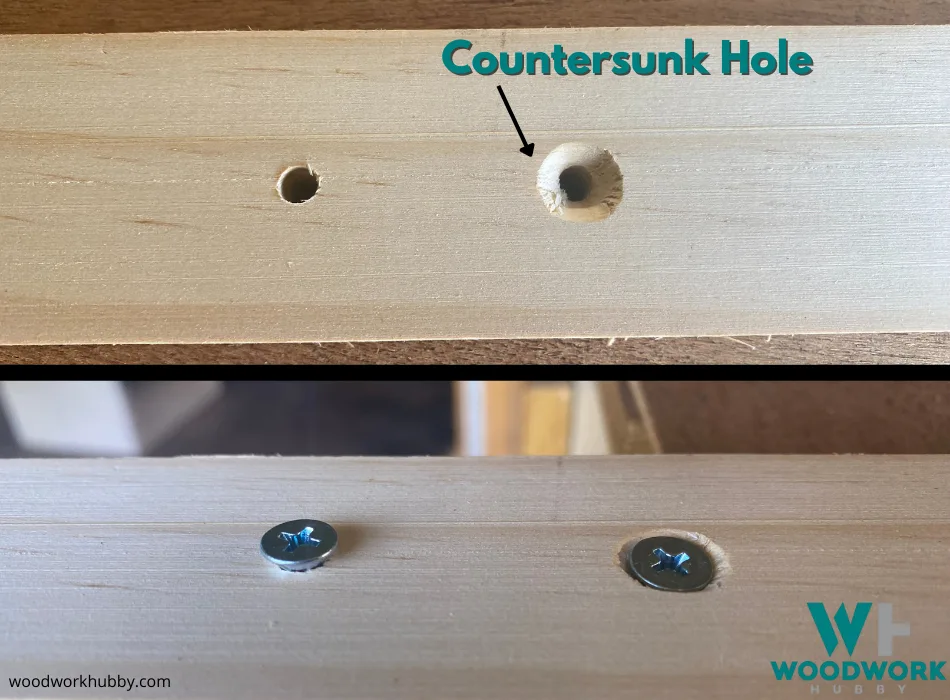
Do I Need to Countersink Wood Screws?
Countersunk wood screws are ideal to make a project look neat and professional but are not mandatory.
The video shows How to Countersink Wood Screws.
Countersinking wood screws can be very useful in certain situations. If you are worried about the screw being turned, countersinking it can make it more challenging to turn. This is because the head of the screw will be sitting below the surface of the wood, and it will be more difficult to get a grip on it.
What Are the Advantages of a Countersunk?
There are 10 advantages to using a countersunk screw, and I will discuss the main ones below.
- Hide The Screws.
- Allows for the Filling of the screw heads.
- It Protrudes Less and Avoids Cracking Wood.
- This Allows Room for the Screw to Expand and Contract.
- It Gives a Flush Finish.
- Less Likely to Strip.
- This Allows You to Drive the Screw Deeper.
- It Makes It Easier to Remove the Screw.
- Avoids Cracking the Wood.
- Screw Coming Out Over Time.
I will explain each of these items below.
1. Hide the Screws
A countersunk will hide the screw beneath the surface of the wood, making it less visible. If you are using screws for decoration, then this can be a very useful advantage.
You may hide the screw by covering it with a wood plug. The plugs can be held in place with wood glue. But be sure to remove any extra by wiping with a moist towel.
You might also need to resand the plug section after waiting for the glue to dry. This enables you to remove any remaining glue stains on the wood. This needs to be taken out since the adhesive can impede the effectiveness of the wood stain.
A wooden dowel piece can be used as the plug in another method. It should be cut just below the wood’s surface, then sanded to be flush with the surface. This can be accomplished with a coping saw, hand miter saw, or another tool with a fine-toothed blade. Additionally, you should glue the dowel just like you did with the wood plug.
The screw can easily be covered with wood buttons. They resemble wooden plugs. Buttons are rounded, whereas plugs are sanded flush to the wood’s surface. You can purchase these at any local hobby or craft store.
2. Allows Filling of the Screw Head
For a real professional finish, screw heads can be filled with a grain-matching wood filler to help disguise them.
To do this, screws need to be countersunk below the surface so that wood filler can be applied. When the filler is dry, it can be sanded off flush with the surface and completely hide the screws.
This is not necessary on most home DIY projects, but if you are looking for a finish that is more professional, countersinking and filling are highly sought after.
3. Protrudes Less and Avoids Cracking Wood
When you countersink your wood screws, the project will look nicer as the screw will sit below the surface. This can be useful for hiding the screws but has other advantages.
When you use a countersunk screw, the head will sit below the surface of the wood. This means that there will be less chance of the wood splitting as the screw is driven in. It also means that there is less chance of the screw working its way out of the wood over time.
4. Allows Room for the Screw to Expand and Contract
As the temperature changes, wood expands and contracts. This can cause problems with screws that are driven into the wood, as they will expand and contract with the wood. This can eventually lead to the screw working its way out of the wood.
When you use a countersunk screw, the head of the screw sits below the surface of the wood. This means that there is room for the screw to expand and contract without causing problems.
This is especially important in areas where there are large temperature changes, such as near windows or doors.
I put into real test whether Can Wood Filler Hold A Screw? Check out my shocking discovery here!
5. Gives a Flush Finish
When you use a countersunk screw, the head of the screw will sit below the surface of the wood. This gives a much nicer finish than if you had used a different type of screw.
If you are using screws for decoration, then this can be a very important advantage. It also has other advantages that I will discuss below.
6. Less Likely to Strip
When you use a countersunk screw, it is less likely to strip. This is because the head of the screw sits is tapered. A tapered head will fit snugly into the countersink hole. This means there is less chance of the screw slipping as you drive it in.
This can be very important if you are working with hardwood, as it is very easy to strip the head of a screw when you are working with hardwood.
7. Allows You to Drive the Screw Deeper
When you use a countersunk screw, it allows you to drive the screw in deeper. This is because the head of the screw sits below the surface of the wood. This means there is less chance of the head stripping as you drive in the screw.
Woodworking needs a lot of screws driven in deeply. This is why countersunk screws are so popular among woodworkers. They allow you to drive the screw in deeply without stripping the head.
8. Makes It Easier to Remove the Screw
When you use a countersunk screw, it makes it easier to remove the screw. The screws are less likely to strip, and the head of the screw sits below the surface of the wood. This makes it easier to get a grip on the head of the screw and remove it.
9. Avoids Cracking the Wood
Wood is a natural material, and it is very strong. However, it is also very brittle. This means that it can crack if you apply too much pressure to it.
When you use a countersunk screw, the head of the screw sits below the surface of the wood. This means there is less chance of the wood cracking as you drive in the screw.
10. Screw Coming Out Over Time
Countersunk screws are also less likely to work their way out of the wood over time. You might think that this would not be a problem, but it can be.
As the temperature changes, wood expands and contracts. This can cause problems with screws that are driven into the wood, as they will expand and contract with the wood. This can eventually lead to the screw working its way out of the wood.
When you use a countersunk screw, the head of the screw sits below the surface of the wood. This means that there is room for the screw to expand and contract without causing problems.
This is especially important in areas where there are large temperature changes, such as near windows or doors. Countersunk screws are also less likely to work their way out of the wood over time.
I tried to determine whether It Is Safe To Reuse Screw Holes In Wood. Here is what I did. Be sure to check it out!
What Type of Screw Is Best for Wood?
Steel screws are the best type of screw to use for wood. They are strong, and they do not rust. If you use screws for decoration, you might want to use brass or bronze screws. These look nicer than steel screws, but they are not as strong. Aluminum screws are also an option, but they are not as strong as steel screws.
The video shows the kind of screw that you should use.
Is a Countersink Necessary?
A countersink is not strictly necessary, but it does make it easier to drive the screw in. It also makes it less likely that the head of the screw will strip.
I would recommend using a countersink if you are going to be driving a lot of screws into the wood. If you are only driving a few screws, you might not need to use a countersink.
I complied the 9 Essential Tips For Screwing Into MDF! A must read article!
Things To Be Mindful of When Countersinking
When countersinking, you need to be careful not to drill too deeply. If you do, you might go through the other side of the wood.
Other things to keep in mind include:
Pressure
Wood is a natural material, and it is very strong. However, it is also very brittle. This means that it can crack if you apply too much pressure to it.
When countersinking, ensure you do not apply too much pressure to the drill. This could cause the wood to crack.
Drill Bit Size
Make sure that you use the correct size drill bit. If you use a drill bit that is too small, the countersink will not be deep enough.
If you use a drill bit that is too big, you might accidentally make a hole in the wood that is too big. This can cause problems when driving in the screws.
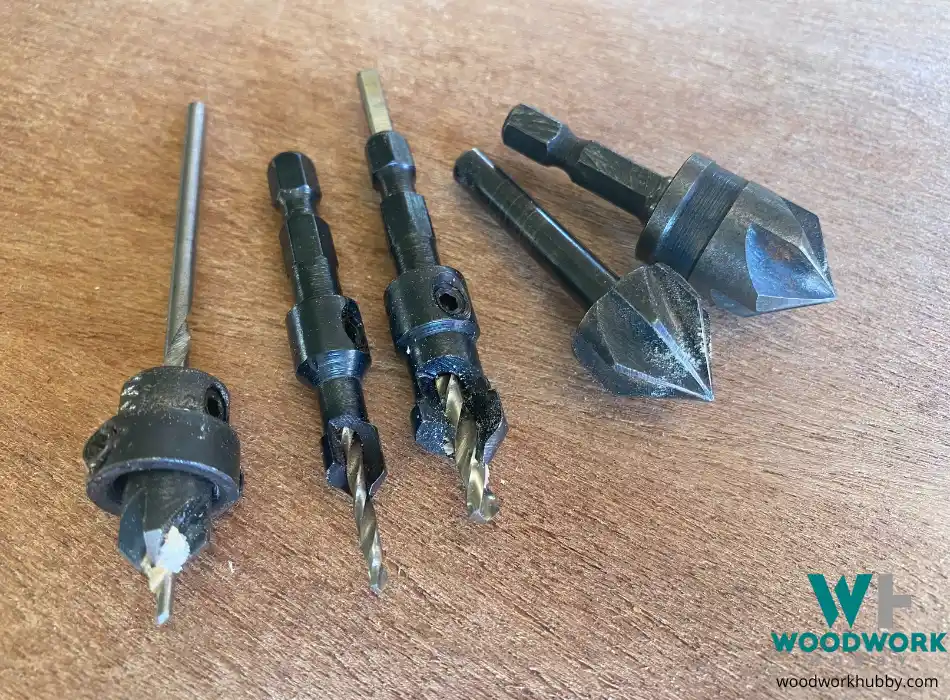
Positioning the Hole
When countersinking, ensure the hole is in the correct position. This can be tricky, as you need to make sure that the head of the screw will sit below the surface of the wood.
You also need to ensure that the hole is not too close to the wood’s edge. The wood might crack when you drive in the screw if it is.
Speed
When countersinking, you need to ensure that you do not drill too quickly. This can cause the wood to heat up and crack. The speed at that you drill will depend on the type of wood you are using.
Type of Drill
The type of drill you use will also play a role in how successful your countersinking is. A cordless drill is the best option, as it gives you more control. However, a corded drill will work just as well.
Does Countersinking Weaken Wood?
Countersinking does not weaken the wood. In fact, it can actually help to prevent the wood from cracking. This is because the head of the screw sits below the surface of the wood. This means that there is room for the screw to expand and contract without causing problems.
Countersinking also helps to prevent the drill bit from slipping. This can cause the wood to crack, but it is less likely to happen if you use a countersink.
Final Thoughts
Countersunk screws have a number of advantages over other types of screws. They are less likely to cause the wood to crack and are easier to drive into. They also look nicer, as the head of the screw is hidden beneath the surface of the wood.
I hope this article has helped you to understand the benefits of using countersunk wood screws.
-
What Is Cedar Wood Used For? (Why I Stopped Using It On Some Projects)
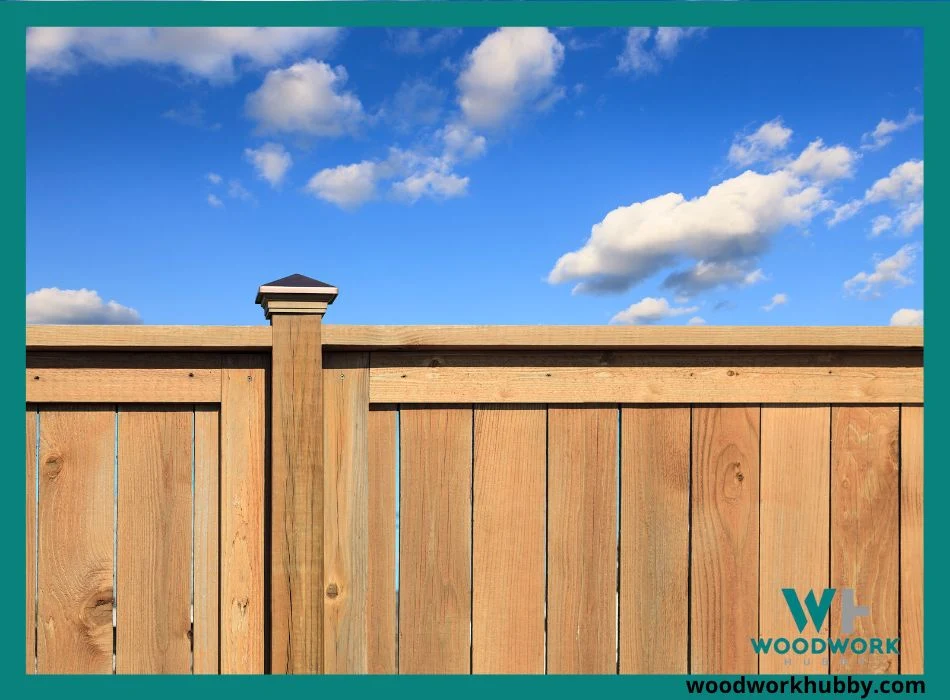
Cedar is one of my favorite wood types because I am tasked with perpetually protecting some of my passion projects. It is one of the most resilient woods out there, and I often find myself wishing that all woods were like Cedar because I cannot really use it for all projects. Cedar wood is used…
-
12 Beginner Wood Carving Projects Anyone Can Carve
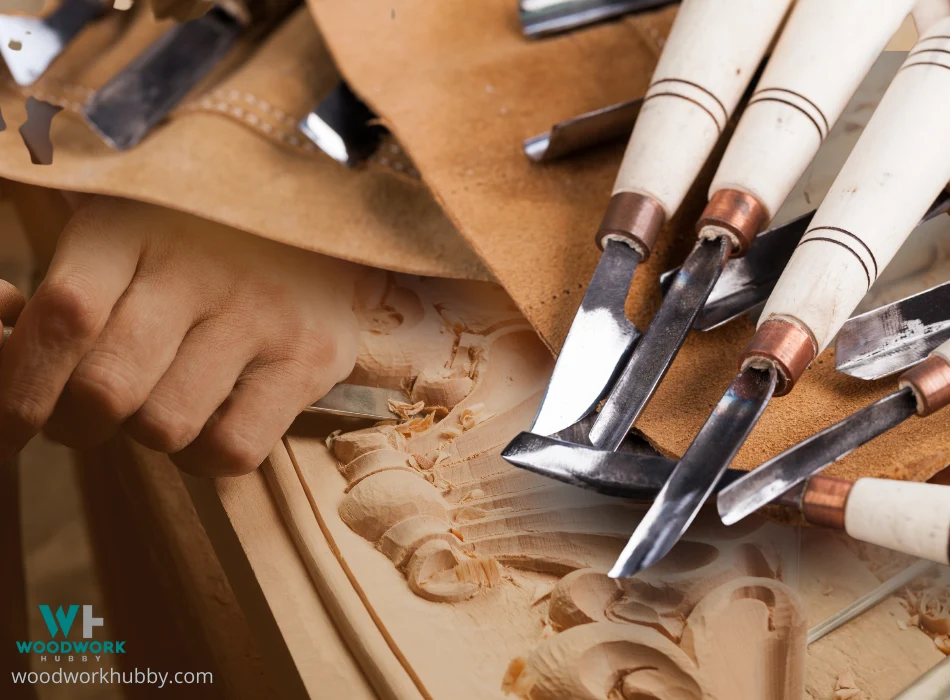
Beginner Wood Carving As a woodworker, I believe woodcarving is one of the simplest forms of woodwork anyone could get involved in. If you start out with the most basic projects first, you can quickly develop the skills and the enjoyment to continue the hobby. I find I get a great sense of achievement from…
-
9 Essential Tips For Screwing Into MDF
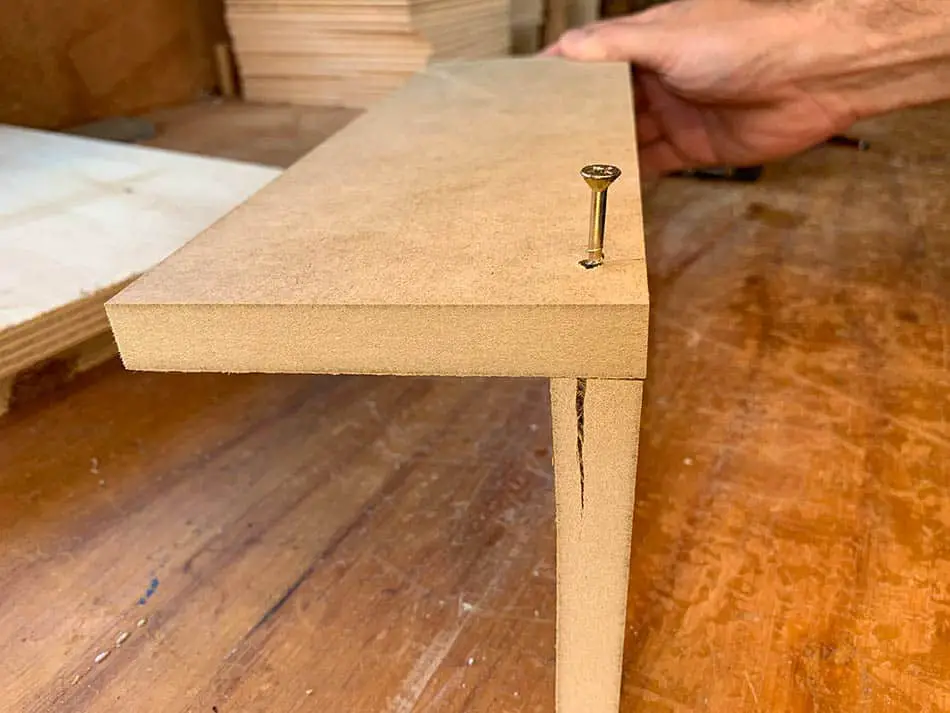
MDF seems to be the one thing that scares most people whenever they need to screw into its edge. I have been a cabinetmaker for the last 20 years and screwing MDF together is something we did every day.All of the apprentices would be always asking how to screw into the edges of MDF without…
-
Maximizing Savings with Bulk Purchase of Wooden Cutting Boards for Your Restaurant

Running a successful restaurant business requires a delicate balance between offering top-notch culinary experiences and managing operational costs. One often overlooked but significant way to save money is by purchasing wooden cutting boards in bulk for your staff. These humble yet essential tools are the unsung heroes of any kitchen, and opting for cost-effective options…
-
Top 5 Best Portable Table Saw For Fine Woodworking

Are you struggling to find the perfect portable table saw for your fine woodworking projects? I know exactly how daunting that can be, having faced the same hurdle once upon a time. After many years of working as a contractor, I have used many table saws and so I decided to identify the best portable…
-
How To Remove Sticky Residue From Wood Table Top (It Works)

I totally get it. That unsightly sticky residue on your beautiful wooden table top just isn’t fun, is it? But how to remove sticky residue from wood table top without causing damage? After much research and plenty of experiments — some successful, others not so much — I’ve compiled quite a variety of methods to…

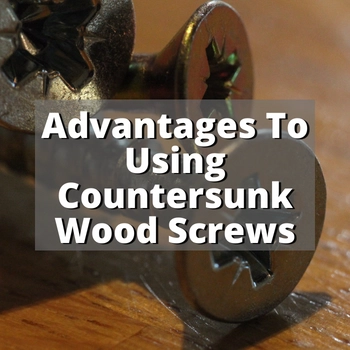
5 responses to “10 Advantages To Using Countersunk Wood Screws”
[…] threads of the screw. Hardwoods may require a slightly larger hole which would also help enable the screw head to bury flush with the top piece of wood being […]
[…] Countersunk screws work well in MDF provided you have drilled a pilot hole that prevents the MDF from splitting. Countersunk screws should not be used in pocket holes on MDF. […]
[…] my picture, I have shown both countersunk and pan head screws. Either will work […]
[…] all of my years of doing woodwork, I have very rarely used a washer on a wood screw especially with a countersunk […]
[…] if you repair or maintain a current piece of furniture and have noticed the wood screws are growing loose or have failed, you can either fix the problem using a number of methods for […]